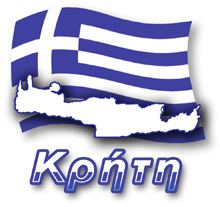
The ruins of the ancient city of Lissos (Λισσός) are located about 3.5 km from Sougia on the southern coast of Crete and about 70 km southwest of the city of Chania in the place where Agios Kirikos is currently located. Lissos is one of those places that can be reached either on foot over a part of the E4 route or a rented boat.
Pedestrian crossing is not a particularly easy trip, but looking at the remains of the amazing mosaic in the ancient temple of Asklepios, you forget about the scorching sun and the more difficult parts of the trail leading here.
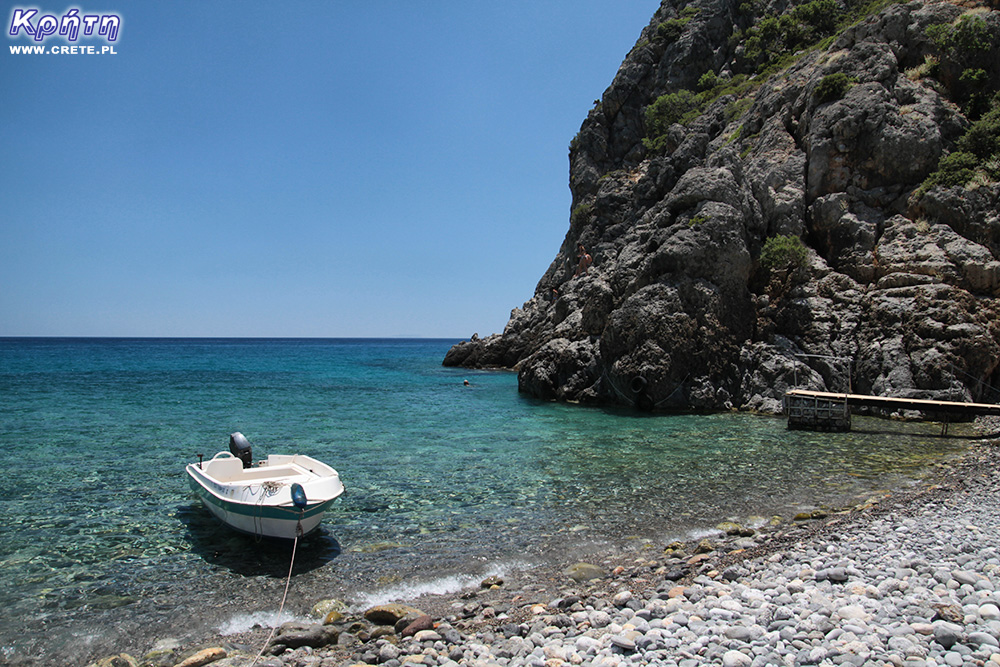
Ancient Lissos, located between Paleochora and Sougia, was the port of the Doric town of Elyros, which was located in the place of the contemporary village of Rodovani. Archaeologists date the existence of Lissos between the 4th century BC and the 9th century AD The early history of the city is not well understood. Both Lissos and 30,000-strong Elyros and its other port, Sougia, flourished during Hellenistic, Roman and Byzantine times. Saraceni, who came here from Spain, were responsible for the destruction of this place. The end of the city's existence was ultimately caused by a huge earthquake which then hit the island.
The autonomous Lissos lying on the route of merchant routes had a huge merchant fleet. Residents also based their activities on fishing. On the basis of the inscriptions and coins found, it is known that in the Hellenistic period Lissos played an important role as a member of the Orio Federation, which also included Elyros, Syia, Poikilassos, Tarra and Yrtakina.
Both Elyros and Lissos had their own coins. Those beaten in Lissos (supposedly gold) found after centuries by archaeologists on the one hand presented the image of the Greek goddess Artemis and on the other - a dolphin.
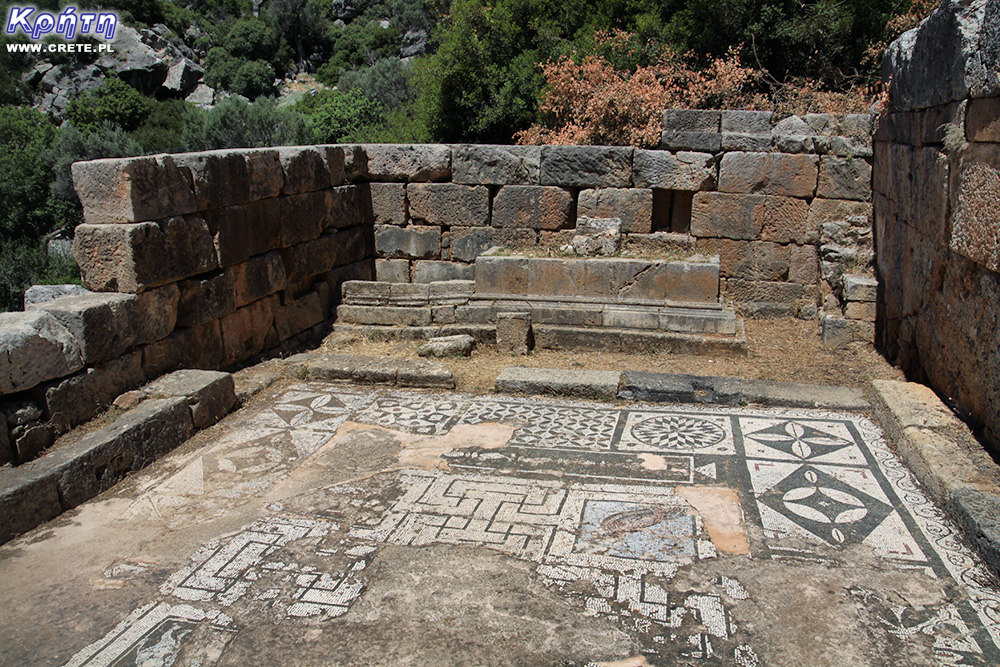
In ancient times, Lissos was a place where people from all over Crete, Greece and the North African coast came. The purpose of their journey was the Askleopiosa temple (Aesculapium) famous for its unusual water gushing from local sources. According to the message, it supposedly had a beneficial health power, which was willingly used to treat all kinds of ailments. Today, only the fragments of the walls and the enchanting Roman mosaic covering the former temple floor remain from this sanctuary. Animal and geometric motifs have survived the great earthquake and can be admired here on the spot. Fragments of the walls were partially reconstructed from the same materials that previously formed the temple. It is an extraordinary experience for every fascinated archeology, looking at the old mosaic that has not been transferred to a sterile museum. It is just for this temple to come here and admire the precision of forms and the beauty of workmanship.
Discovering Aesculapium, as is often the case in Crete, we owe to a local shepherd who was looking for water for his flock. Serious archaeological work was carried out here in the years 1957-1960. Asklepios' temple was excavated by a famous Greek archaeologist, discoverer of the Minoan palace in Zakros, Nikolas Plato. Its ruins were under great rocks, which centuries ago contributed to its destruction and at the same time have hidden its remains for hundreds of years. Around the ruins of the temple, other auxiliary objects associated with the functioning of this place in antiquity were also identified.
The remains of Lissos are scattered throughout the entire valley, so look carefully around. Some parts of the building are just in the surrounding bush. This is where 20 statues were found, including the famous figures of Asclepius, his daughter Hygiei, the goddess of health, and the statue of Pluto. Of course, these sculptures are not here anymore, because these valuable artefacts have been moved to the Archaeological Museum in Chania and Heraklion. These numerous finds testify to the wealth and power of the old Lissos. According to sources, only Gortyn, the Roman capital of Crete, has found a larger number of statues.
Most of the discovered ruins such as fragments of the theater and waterworks come from the Roman period. From this time, there are also 118 Roman tombs that cover the entire south and west of the gorge. From a distance, the burial chambers remind youinches single-bay small houses, because they were built on a rectangular plan with a convex vault.
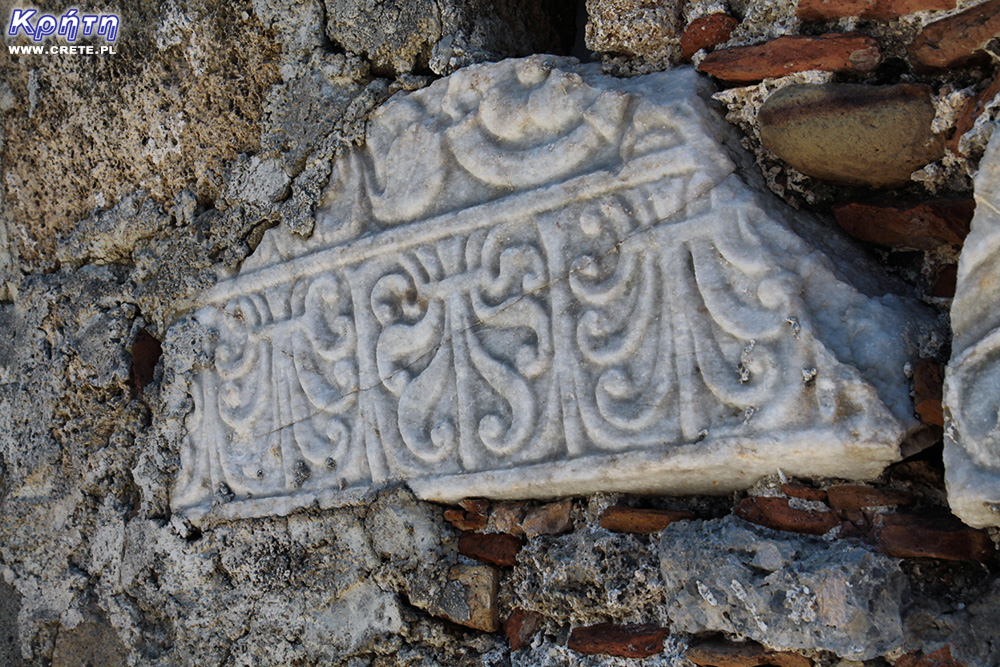
In the further part there are two Byzantine chapels of Agios Kirikos and Panagia. Dated to the 13th century, they were built on the ruins of early Christian churches.
In the church of Agios Kirikos, on the 15th of June the Saint day is celebrated. Kirikosa, who was the youngest martyr of the Orthodox Church. On this evening, pilgrims come here by boat, who visit this church and participate in all-night celebrations.
Archaeological work in Lissos is still ongoing, so more than one treasure in the earth will be discovered in the future. One finds, among other things, the Diktinny Temple (Britomartis), which the researchers probably have evidence of.
In 1994, thanks to the acquired funds from the LEADER EU program, the excavated ruins were subjected to cleaning, maintenance and surface tests. Currently, much of the valley in which the ruins of Lissos are located has been expropriated by the Greek Ministry of Culture.
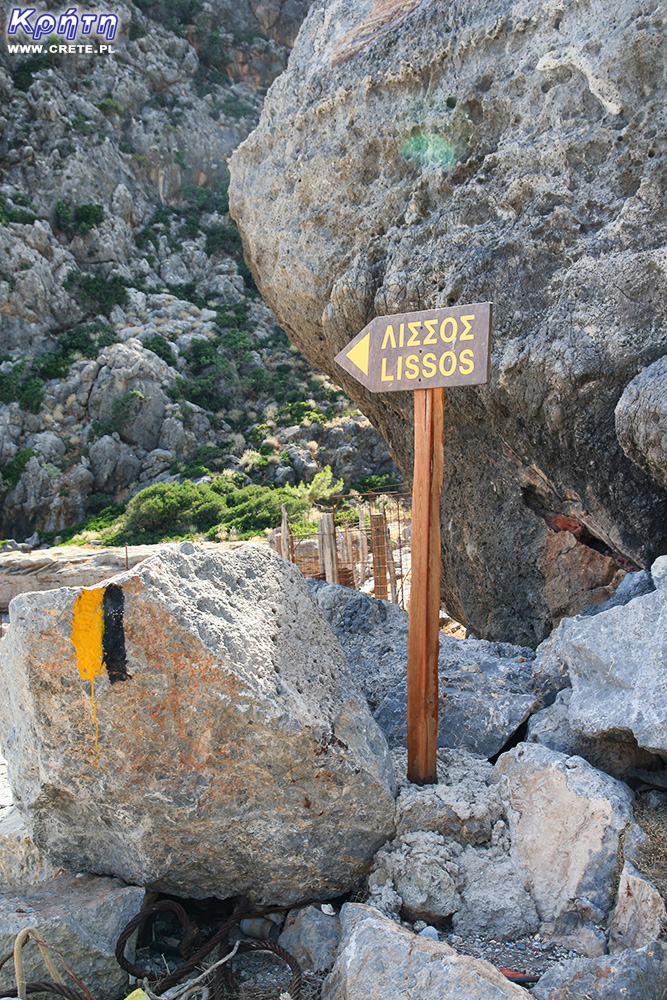 As we mentioned at the outset to reach Lissos, you can either rent a boat or walk along the E4 route from Paleochory (11.5 km) or from Sougia (3.5 km).
As we mentioned at the outset to reach Lissos, you can either rent a boat or walk along the E4 route from Paleochory (11.5 km) or from Sougia (3.5 km).
In spite of the relatively short distance between Sougia and Lissos, the passage of this route, especially in the hot summer, requires good preparation, because you can not replenish the water supply along the way. A few years ago, we found out for ourselves how ruthless the sun is here, when the water supply proves to be insufficient. Preparing to overcome this route, we have already prepared appropriately taking with us the appropriate amount of drinking.
After leaving the car in the parking lot in Sougia, we went west along the main road running by the beach. After passing a small harbor, where there is a small stony beach, we spotted a hand-painted signpost with the inscription Lissos. This place signals the beginning of the route, which starts at the mouth of a small picturesque gorge.
In this part of the route, get ready to overcome boulders and boughs that often cross the road. The further you get into the gorge, the more annoying the heat will become due to the still air. On the way, you will pass a picturesque hanging rock, in which the sheep and goats tend to hide. You can see the thick layer of their faeces accumulated in this place. After some time, the path leading along the bottom of the ravine begins to slowly climb to the western slope. It's a good place to make a stop. It is worth using the shadow cast by trees, especially that later it will not be at all.
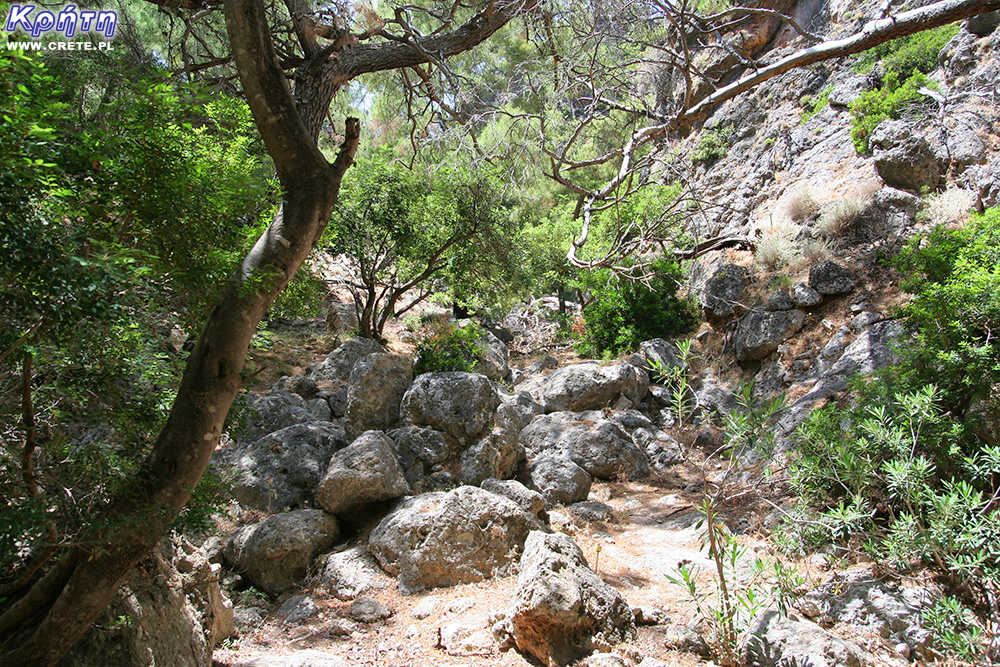
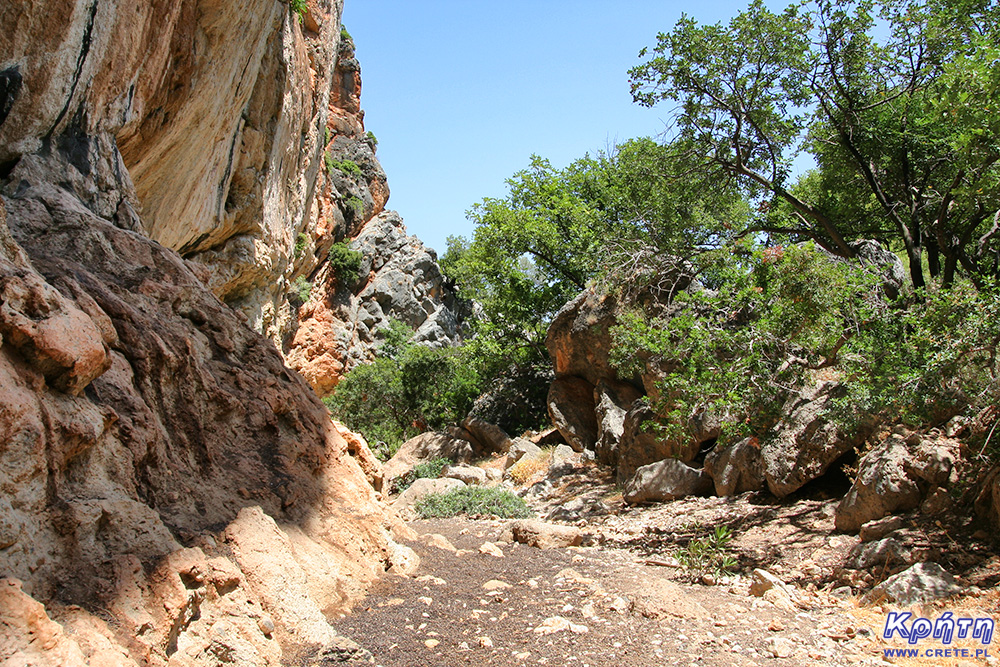
After entering the upper part of the trail we get to the Kandouni plateau, where we head further west. A poorly visible path winds between stones, dry prickly bushes and clumps of thyme. Trees here hardly grow, and the burning sun seems to suck every drop of sweat appearing on the skin.
After about 800 meters of this "pan" we reach the edge of the slope. Here begins the part of the trail a bit harder to pass. It gets more steep and narrow and the path goes down sharply. We have the impression that the descent is much more difficult than the later way back, which passes in principle quite quickly. After a few dozen minutes, he finally goes down to the bottom of the valley and almost immediately goes to the ruins of the temple of Asklepios. They are fenced but to enter, just open the gate. The plaque attached to the gate informs you to close it behind you.
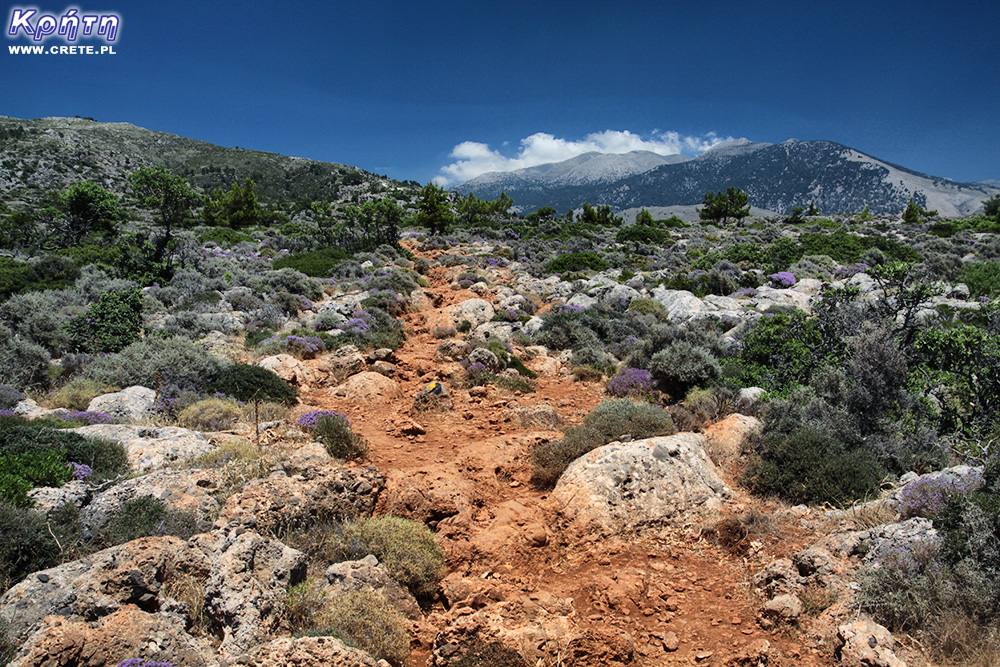
After looking at the wonderful mosaic, we returned to the trail. Although it may be too big a word, because the path is unspecified and has many branches. It's best to just go towards the coast. The beach marking the end of the trail and the bottom of the sea are stony.However, it does not bother the local family to play in the water. For a dozen or so minutes, we watch the kids jump into the sea from a steep slope descending towards the water.
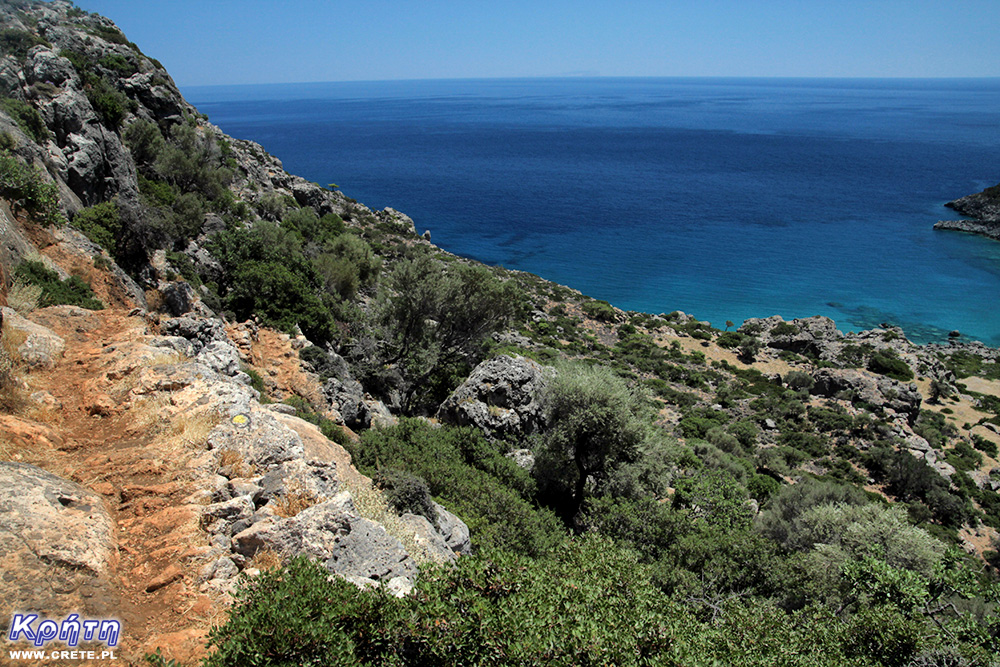
Of course, you can go on the way back using a boat (if you decide to deal with the captain earlier), but we decide to go the same way on foot. Climbing on a steep slope goes faster and faster than descent. This time the road through the plateau begins to slow down very quickly. The sun, which stands high in the sky at this time, is much more annoying. Finally, we reach the edge of the "pan" and after a short break in the shade of the trees, we begin to descend down the ravine. A walk along this piece of the route marked out in the forest is definitely the most pleasant part of it. In the end, we come to the bottom of the ravine, where there is still a long way to go. Choosing this trip in the summer especially on windless days, you have to get ready for a small "hell" in this part of the route. The heat pouring from the sky and ubiquitous heat is compounded by heated rocks and stone, which reflect the heat accumulated in their interior. With unhappy joy, we finally reach the exit of the ravine and enjoy the benefits of the sea on the beach at the mouth of the ravine. And this time, somehow we do not pay attention to the fact that it is stony ;-)
↤ click the appropriate part of the island to change the bottom map
W 2002 roku Falasarna zdobyła tytuł najlepszej plaży w Grecji. Wyróżnienie to nie jest bynajmniej przypadkowe, gdyż miejsce to jak na standardy Krety jest naprawdę unikalne.
Elafonisi is a small island located at the end of the southwestern edge of Crete. A characteristic feature of Elafonisi is the shallow lagoon connecting it with Crete.
Elafonisi is a small island located at the end of the southwestern edge of Crete. A characteristic feature of Elafonisi is the shallow lagoon connecting it with Crete.
This is the second largest airport (IATA code: CHQ) in Crete. In 2010, the airport in Chania served a total of over 1.65 million passengers.
Chania (Χανιά) is the second largest (after Heraklion) city of Crete. The biggest advantage of Chania is the area of the Old Town and the beautiful Venetian Harbor.
Aptera is a city whose history dates back to at least a thousand years before our era. In the peak period, about 20,000 lived in it. people, of which only 1/5 were free people.
Chania (Χανιά) is the second largest (after Heraklion) city of Crete. The biggest advantage of Chania is the area of the Old Town and the beautiful Venetian Harbor.
The genesis of the name of this poviat will not surprise anybody who will break the road from the Imbros gorge to Hora Sfakion.
Frangokastello is a small fortress that was built by the Venetians over four years from 1371. Initially, the castle was named after Saint Nikitas.
(Χρυσοσκαλίτισσα) The Church of the Blessed Virgin Mary with the Golden Step from the 17th century is the westernmost church building of this type.
(Χρυσοσκαλίτισσα) The Church of the Blessed Virgin Mary with the Golden Step from the 17th century is the westernmost church building of this type.
Omalos is a perfect starting point for exploring the Samaria Gorge. Located over 1,100 m above sea level extends over an area of 25 km2. Its size corresponds more or less to the size of the Lasithi Plateau.
Located 47 km from the city of Chania, it is the only freshwater lake in Crete. Its area is about 580 thousand. sqm. and the maximum depth is about 45 meters
Omalos is a perfect starting point for exploring the Samaria Gorge. Located over 1,100 m above sea level extends over an area of 25 km2. Its size corresponds more or less to the size of the Lasithi Plateau.
The steel crossing, which in the central part is separated from the ground by nearly 150 m, is at the leading position of the places where the longest bungee jumps are made.
Chania (Χανιά) is the second largest (after Heraklion) city of Crete. The biggest advantage of Chania is the area of the Old Town and the beautiful Venetian Harbor.
The genesis of the name of this poviat will not surprise anybody who will break the road from the Imbros gorge to Hora Sfakion. Word
This is the second largest airport (IATA code: CHQ) in Crete. In 2010, the airport in Chania served a total of over 1.65 million passengers.
Chora Sfakion is an extremely picturesque mountain village of the mountainous and wild Sfakia region
Loutro is famous for the fact that you can get to it only from the sea or walk on the mountain trail, because there is no other road here.
Stavros used to be a small fishing village. Today, it is primarily a tourist destination, but in a positive sense.
The cave is less than 1 km from Moni Gouvernetou Monastery. You will reach it using the pedestrian trail that has been marked out along the slope of the Avlaki Gorge.
Balos is one of Crete's flagship beaches if not all of Greece. We can assure you that the landscapes you see during your trip to Balos will remain with you for a very long time.
Moni Katholiko is probably the oldest and most spectacular monastery in Crete. It is located 20 km north-east of Chania.
The Orthodox monastery of Agia Triada, located on the northern part of the Akrotiri peninsula, is one of the most beautiful and richest monasteries in Crete.
The Orthodox monastery of Agia Triada, located on the northern part of the Akrotiri peninsula, is one of the most beautiful and richest monasteries in Crete.
Gouverneto Monastery is probably the oldest active Greek Catholic monastery located on the Akrotiri peninsula near Chania.
The length of the trail leading through this place is about 8 kilometers and the difference in altitude is about 600m.
Agia Roumeli znajduje się na południowym wybrzeżu Prefektury Chania, pomiędzy miejscowościami Chora Sfakion i Paleochora.
Until the early nineties, this place was known only to few tourists and local residents.
Paleochora is a quite well-organized tourist town, with a beautiful large sandy beach
Ruiny starożytnego miasta Lissos znajdują się około 3,5 km od miejscowości Sougia na południowym wybrzeżu Krety.
Samaria is one of the most important tourist attractions located in the western part of Crete.
On the north-western coast of Crete, at the foot of the Gramovous peninsula, there are ruins of the ancient port of Korikos, later known as Falassarna.
Krios Beach is located about 9 km west of Paleochora and it is also the last beach on this stretch of the southern coast
Between the villages of Topolia and Koutsamatados there is an interesting cave known as Agia Sofia
Milia is an authentic mountain settlement, which most probably dates from about the seventeenth century.
On the edge of the village of Potamida grows a complex of clay mounds called Komolithi (Komolithoi)
Grammeno (Γραμμένο) is a beach that can be counted among one of the best and most beautiful beaches in this part of Crete.
Platanias is a popular tourist destination. It is here that there are very interesting tunnels from World War II.
Polyrinia was one of the most important city-states of western Crete during the Hellenistic and Roman periods. It was built amphitheater on a steep hill, rising to a height of 481 meters above sea level
The Agia Irini gorge, just a short distance from the village of Sougia, is one of the most popular hiking destinations.
The island of Gramvousa, or in fact Imeri Gramvousa (Ήμερη Γραμβούσα), is an inseparable point of a trip that combines a stay in the Balos Lagoon with visiting the remains of a fortress located on the top of the island of Imeri Gramovousa.
Agia Roumeli is located on the south coast of Chania Prefecture, between Chora Sfakion and Paleochora.
The Byzantine church of Agios Pavlos was erected on the remote Selouda Beach in the south of Crete.
There is a beach in Crete that literally makes some people shiver. This place is Seitan Limania which can be translated as Satan's Ports or Cursed Ports.
Aspri Limni means White Lake, although the lake is just a conventional name. Under this term there is a small bay.
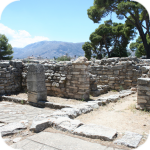
Tylissos is one of the few places in Crete that has kept its name since ancient times. Between 1200 and 1000 BC, many settlements were abandoned by their inhabitants, who founded new villages in more inaccessible areas. Tylissos is an exception because it was inhabited all the time, thanks to which cultural continuity was maintained and the development of the religious center took place.
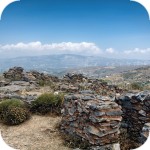
11 km from the city of Sitia, near the modern village of Chamaizi, there is a small archaeological site. At the top of a cone-shaped hill called Souvloto Mouri, the remains of an unusual building with a unique oval shape were discovered. Despite its small size, it is one of the most important discoveries that comes from the Central Minoan period. So far, it is the only oval building from Crete in this period.
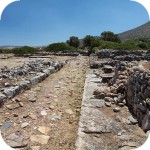
Just over 2 km from Palekastro, next to Chiona beach, there is a large archaeological site called Roussolakos, which is worth visiting in this region of Crete.
Komentarze
komentarz z
Mam pytanie. W mojej sytuacji pieszo nie wchodzi w rachube. Gdybym doplynela lodka z Sougii czy ruiny sa oddalone od wybrzeza? Czy trzeba sie wspinac po skalach? Za kilka dni bede na Krecie i wybieram sie do Sougii. Czy ew łodki do Lissos czekaja w porcie czy trzeba zamawiac?
komentarz z
Ruiny świątyni są nieco oddalone od wybrzeża ale idzie się po płaskim terenie. Pozostałości grobów są rozsiane raczej na zboczach więc dostęp tam jest dość utrudniony. Natomiast kaplica Agios Kirikos jest tuż przy plaży. Zaś co do łódki to w wielu miejscach w Sougii są rozwieszone ogłoszenia z nr telefonu do kapitana. Ewentualnie można popytać też w tawernach.
komentarz z
Dzięki
komentarz z
Byłam, płynęłam z kapitanem George do Lissos motorowka. Po prostu był w porcie.W Lissos byłam w świątyni Asklepiosa, kaplicy.Grobowce widziałam. W drodze powrotnej kapitan pokazał ogromną grote w skałach w pobliżu. A w Sougii jadłam w tawernie przepyszna rybkę. Droga z Chania przez góry tez była ekscytująca.
komentarz z
Super! Bardzo się cieszymy że poznałaś to miejsce :)
Trasa z Sougii do Lissos to 45 min + zdjęcia i podziwianie krajobrazu - w zależności od potrzeb dla wprawnego piechura - przeszliśmy ją w sumie czterokrotnie, w tym dwukrotnie z plecakami na dwutygodniowy pobyt plus jedzenie i woda na dwa dni -25 i 15 kg, ma długość niecałe 3,5 km i przewyższenie ok 150 m ( profil trasy - https://pl.wikiloc.com/szlaki-wycieczki-piesze/sougia-lissos-25255614) W 2017 wracając spieszyliśmy się i przeszliśmy w 40 min jednym ciągiem - nawet bez postoju na picie które mieliśmy ale nie było potrzebne - tak więc osobom choć trochę chodzącym polecam - prawie każdy przejdzie bez problemu.
Lissos tylko pieszo polecam
Byłam w Lissos pieszo z Sugi w lipcu zeszłego roku. Półtoragodzinny treking zapiera dech ☺
Wypełnij poniższy formularz aby dodać komentarz
lub kliknij w poniższy link aby skorzystać z możliwosci komentowania przez facebooka:
https://www.facebook.com/crete.poland/posts/10153635750937551